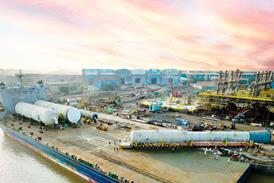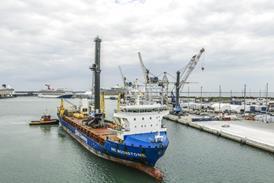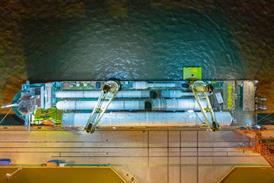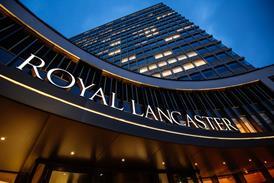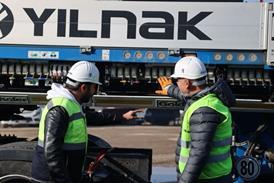18 Liebherr cranes are being used to support a major construction project on Germany’s Rader High Bridge.
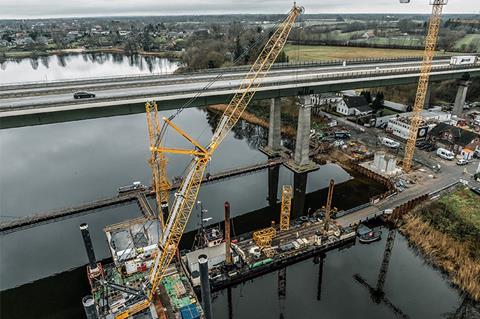
The cranes come from the rental fleet of Konshagen-based Friedrich Niemann. Five fast-erecting cranes, two 65 K.1s and three 81 K.1s, are onsite to assist with the foundations. The new bridge piers are being built with the help of six 125 EC-B and seven 150 EC-B flat-top cranes.
A 150 EC-B 8 Litronic started off working on the bridge pier on land but the progression of the site required the crane to be moved. The first crane to arrive on the construction site, a 125 EC-B, was assembled at the end of 2023
Assembly took place in the waters of Lake Borgstedt, where the crane stood on the first pier’s pile cap secured by foundation anchors. This involved working with a Liebherr crawler crane from Nenzing, Austria. The 250-tonne LR 1250 crawler crane required for the assembly was positioned on a floating platform between the crane site and the ferry used for transporting parts.
The flat-top crane reached a hook height of 44 m. Three 125 EC-B cranes were assembled using the 250-tonne crawler crane, from its floating platform on the water. They were initially put together at a height of 30 m and then climbed to their final hook height of 50 m using hydraulic climbing equipment. This allowed them to work some 15 m above the roadway.
Ultimately, the Rader High Bridge will be replaced and widened over the next few years. The structure spans the Kiel Canal along Germany’s A7 motorway, the northbound high-speed link from Hamburg to Denmark.
The project is taking place in two stages. The eastern half of the bridge is being built first, next to the existing bridge, and is expected to be opened to traffic in 2026. Following this, the original bridge will be closed and demolished, with the western bridge section being built in its place. The new structure is being widened to six lanes and is planned to be completed in 2031.

